In Timișoara, art has constantly evolved, going beyond classical concepts and increasingly focusing on experimentation. Over time, numerous projects and artistic groups have appeared – such as the ZONA Festival, Sigma, 111, and later the interdisciplinary group Avantpost – which have explored unconventional forms and expanded the boundaries of traditional art.
Figurative art has not influenced this city, being sometimes approached by artists as a combination of the past and the contemporary. The exhibition “There were times I wanted to change the world” presents an industrial and contemporary setting in the Paltim residential complex, where figurative art is revived and combined with contemporary artistic expressions.
The project is a collective initiative launched by Galeria Jecza and brings together artists represented by the galleries Jecza, /SAC, Mobius, Sector 1, Suprainfinit, Himera, and Lutnița. The event is part of the collateral program of the Art Encounters Biennial 2025.
The selected works belong to established and emerging artists: Andreea Anghel, Robert Andacs, Apparatus 22, Marius Bercea, Anca Brânzaș, Michele Bressan, Diana Cepleanu, Alina Cioară, Mihaela Coandă, Suzana Dan, Norbert Filep, Andrei Gamarț, Ana Ionescu, Jesse Kase, Daria Koltsova, Tincuța Marin, Andrei Nuțu, Radu Oreian, Dan Palade, Lucian Popăilă, Marius Rițiu, Salt Salome, Ioana Tocoaie, Roman Tolici.
In her curatorial research, Diana Marincu addresses concepts such as the mirror, the simulacrum, and the monstrous, emphasizing the question: Does order arise from chaos, thus putting an end to it, or is disorder the disturbing destiny of any so-called order?
The monstrous is a visual and emotional form of disorder that underlies all human construction and which society tries to hide. This lack of order stays present and manifests itself when things get unstable. Art thus becomes a space where instability is exposed, not controlled, through methods such as hybridization, deformation, or collage. At the same time, the monstrous is a strategy that questions the imposed order and makes visible what is usually hidden under the appearances of normality.
In surrealist art, and particularly in the works of Salvador Dalí, disorder is often represented through familiar objects that have been transformed and combined in impossible ways. The distorted clocks in The Persistence of Memory or the contorted and hybrid human bodies reflect a constant tension between incompatible worlds: human and non-human, real and imaginary, familiar and strange. These objects become the embodiment of the unpredictable – unusual forms that do not seek to reassure the viewer, but rather to disturb them, to awaken fear, fascination, and discomfort.[1]
“There were times I wanted to change the world” does not reveal the idea of monstrosity at first glance, but the juxtaposition of figurative and abstract art creates a powerful tension, a “rupture” that gives rise to chaos full of force and contrasts. The monstrous manifests itself here as a hybrid form, combining seemingly opposite elements: the clarity of figurative representation and the ambiguous freedom of abstraction, thus embodying the polarities of creation and perception.
The exhibition extends across three exhibition halls, part of a residential complex. It is an industrial setting, seemingly unfinished, reminiscent of messiness. It is not a “white cube,” where harmony is created and the works have their own niche, but rather a setting that pushes the viewer to explore every corner and decipher the art that awakens a feeling in them.
Far from the atmosphere of a traditional gallery, this context proposes a new way of presenting art, which transcends conventional patterns, thus emphasizing the rebirth of figurative art in a contemporary setting.
The correlation between figurative and abstract art, as well as the combination of different media of expression, such as video, installation, painting, and drawing, reveals the proximity of artists represented by various galleries to bring together in a single framework the artistic similarities and differences that exist between all these contexts.
The first room abstractly opens the exhibition concept, introducing the visitor to an artistic ecosystem, where it seems that each creator had to know the one next to them, and they communicate through their works. In the other two rooms, a collective silence can be observed, where the artist and the work are alone; there is no socializing, only reflection and introspection.
Upon entering the first exhibition room, Tincuța Marin catches the eye with the striking contrast between the industrial setting and her deeply symbolic painting. The rough, unfinished walls and the cold structure of the building evoke a functional, unadorned space – a place of the present, of utility. In contrast, the artist’s work seems to open a gateway to an archaic world, full of mystery and reverie. Tincuța Marin has always used painting as a means of escape, creating a world she describes as “full of monsters and funny creatures.” She sees this universe as a manifestation of the daily struggle between good and evil and as a platform for reenacting the general struggles of everyday life.
The painting Untitled expresses a carefully structured “artistic chaos,” constructed from diverse elements brought together in a coherent and balanced composition. At first glance, the work appears to be a surrealist composition, due to the juxtaposition of elements that do not seem to have a direct connection – as if they were extracted from the subconscious. This seemingly random organization follows an internal logic, similar to the dynamics of dreams, where meanings are formed through tension and intuition, not through reason.
The color scheme, dominated by red, green, and deep blue, creates an expressionist atmosphere, charged with emotion and anxiety. The figure lying on the table evokes a state of suffering or abandonment, suggesting an intense inner experience – one of the defining themes of expressionism.
Abstract physiognomy emerges as a leitmotif in this work: ancient faces clearly point toward the mystical and the dreamlike. The five masks arranged vertically on the table are mirrored in a contemporary form that supports two heads – a dual personality that lives in both the real and the imaginary.
Looking more closely at Tincuța’s work, we can reflect on the question: Are these faces mirrors of ourselves that live only in dreams or only in reality?
Positioned on a prominent wall, opposite Tincuța’s works, Marius Bercea captures a different stage of pictorial style. While Tincuța’s characters and references take us on a journey through art history, exploring folklore, ancient civilizations, and monsters, Bercea brings to the fore a clear return to Baroque art. Although he uses contemporary characters and current spaces, the symbols inspired by famous scenes from art history take on a personal touch, reflecting his own vision of order – an order built by combining two completely different elements.
The painting inside Bercea’s work is reminiscent of Dutch Baroque painting, illustrating the daily life of people. On a contemporary-designed chair, a boy lies stretched out, his hands clasped to his ears. His relaxed position is in contrast to the painting behind him. The twilight of a myth may suggest the child’s choice not to listen to the story behind the myth – a story that belongs to a distant past, reflecting the desire to believe only in what can be seen and the desire to detach oneself from the past. Thus, Bercea’s painting marks a clear separation between subjects: the two women-the painting that symbolizes the past, and the child-the real-contemporary character.
On a brick wall, in complete contrast to the subject of the work, Jesse Kase’s Perfumed introduces us to a world of well-organized chaos. A nude woman, who refers to several sources in art history, Tizian: Venus of Urbino or Manet with Olympia, is surrounded by a multitude of symbols. A bouquet of poppies emerges from the main character’s intimate area and extends towards the top of the canvas. The color blue seems to dominate the entire pictorial surface, symbolizing the woman’s relationship with nature. The woman’s face is covered by a blue veil, which hides her identity, preserving the mystery. This leaves only her body visible, and the flowers emerging from her private parts symbolize the woman’s fragility, resembling a delicate flower. This fragility is not hidden by clothing but reflects an inner purity, a beauty hidden within.
This image concretely reflects the condition of women in art history: often reduced to the role of an object of the male gaze, idealized or sexualized, but rarely represented in all their complexity and subjectivity.
Analyzing the three works – Perfumed by Jesse Kase, Untitled by Tincuța Marin, and Twilight of a Myth by Marius Bercea – we can see a common thread that unites them: their reference to art history and its reinterpretation in a contemporary context. The human body becomes a symbol of reality, not idealized, but organically integrated into its surrounding environment.
The exhibition continues with the installation Trinity, Triangle, Trio No. 2 by the Apparatus 22 group. The materials used – transformed vintage black leather jackets, oil paint, acrylic paint, and three vintage tripods – outline a conceptual scenario in which human presence is subtly but powerfully suggested. The jackets evoke the silhouette of the artist, a memory of the absent body, while the paints refer directly to the artistic gesture, to the traces of the creative hand. The tripods, technical objects loaded with visual memory, are reminiscent of the documentation process.
In the second room of the exhibition, visitors are greeted by an atmosphere dominated by the absence of light, especially by the presence of black in the works of artists Norbert Filep, Sorin Neamțu, and Suzana Dan. Black, as a symbol of the unknown and of indeterminate space, places the viewer in an interior territory, hidden from direct view but activated by the imagination. Thus, each work becomes interactive for the audience, who create their own fiction, shaped by tensions, shadows, and absences.
Norbert Filep creates abstract compositions that subtly and analytically question the role of images in contemporary society, deeply marked by digitization and accelerated visual flows. In his series Kepler’s Tranzit Light Curve, light is not rendered directly, but is found in the form of a mediated, conceptual presence – a rigorous graph of the light intensity of a distant star, inspired by data provided by NASA’s Kepler mission. Thus, the image becomes a mathematical translation of light, an abstract trace of reality, suggesting that what we see is often an interpretation, a construction that belongs both to science and to the imagination.[2]
Suzana Dan, through her paintings The Sky Becomes Smaller – and More Dangerous / There Is Never Enough Time, crosses the neutral spectrum and ultimately reaches the light found in the blue sky, bringing a trace of identity.
Sorin Neamțu explores the idea of self, of “I,” through the series Identical to Oneself, highlighting the repeated presence of the same person in an unchanging setting, which has become symbolic of a stable reality. The number four refers to the four paintings framed in a frame, delimiting a balanced and well-defined space. In total, two frames house four works each, representing the multiple faces that a person acquires throughout their life. The title Identical to Oneself emphasizes the idea that it is the same person, whose desires and experiences change with the stages of existence.
From the perspective of analytical psychology (Carl Gustav Jung), the self is the totality of the conscious and unconscious – a center of inner balance. In Neamțu’s works, the multiplication of the human figure in a constant space emphasizes this idea: man transforms, but remains, in essence, the same.[3]
A sudden change follows, a transition from abstract to figurative, manifested in the works of artists Robert Andacs and Daria Koltsova. Robert’s painting Do You Ever Follow Blindly seems to analyze the entire exhibition, reflected in Daria’s installation In the Splendor of Fallen Suns. The representation of eyes in a painting can transform the work from a figurative one – through recognizable forms – into an almost abstract one, thanks to the artist’s message and intention. Thus, a new disorder emerges, penetrating the interior of the installation In the Splendor of Fallen Suns, where the public is invited to step inside, generating in turn a controlled and participatory agitation.
In room number three, Roman Tolici captures photorealism through which he creates a series of events in the form of chapters that have continuity. In the exhibition, the juxtaposition of the three paintings – The Search for Happiness 5, Bloody Self-Portrait, and A Drop of Mercy – seems to present the three main characters who construct a story. Tolici’s self-portrait, done in the baroque chiaroscuro technique, suggests an oppressive and melancholic feeling. The contrast between the red of the artist’s clothes and the black non-color that dominates the surface of the canvas continues the frame of the action: red symbolizes the sacrifice and wounds of the artist, who feels apparently alone in society.
In Pursuit of Happiness 5, the girl throwing mud is shown in a serene setting, with a sky stretching over the whole landscape. The act of throwing means getting rid of something in her life, and the mud suggests denial and disagreement. Her gaze is unclear, and her hand, in motion, becomes the center of the composition and the narrative; the gesture thus conveys more than her facial expressions.
A hint of pity draws the gaze to the features of the girl depicted. The red color of her clothing reappears, and the blue sky, across which birds fly chaotically, takes on new shades. The sky is no longer a uniform blue but takes on pink tones, suggesting a conflict that destabilizes the birds.
Next to Tolici is Andrei Gamarț, with a portrait in which fog covers the character’s features, leaving only his eyes visible.
Michael captures the presence of a boy dressed in shades of gray, anchored in melancholy. His eyes convey a mesmerizing expressiveness, reinforcing the mystery of this character. The only clearly defined area is his face, while the rest of his body blurs into a diffuse interplay between grays and the pastel tones of the background.
In a world where truth seems shrouded, Gamarț suggests that only the gaze can pierce the opacity of reality. Through painting, the artist manages to dispel this fog – not by faithfully rendering reality, but by revealing a profound, inner truth.
While Roman Tolici’s entire concept was built around color, Andrei Gamarț uses the face, and especially the eyes, to structure a lyrical essay on the meaning of figurative painting and the emotion of the image.
Salt Salome, on the other hand, draws on legends and myths, highlighting part of art history. The Beast of Synumeru is a mysterious and fantastical figure, known by this name, who appeared as a harbinger of disaster, a messenger of death, and a guardian of transcendent justice. Although Salome’s work does not directly refer to the emblematic figure of Medusa, the resemblance is obvious: both embody a timeless, almost mythological force. In art history, there are two versions of Medusa by Michelangelo Merisi da Caravaggio, which challenge the viewer to enter a visual universe charged with shock, pain, and horror.
In contrast, in Salome’s work, the Beast does not directly convey pain, nor does it seek the audience’s empathy. Instead, it builds a barrier of fear, a visual space that dominates and overwhelms. The Beast’s face becomes the focal point of the composition, while the other elements contribute to shading and distorting the entire space. The eyes, mouth, nose, and facial expression seem to seek help – but in a lost world, already conquered.
Waves of reality, Marius Rițiu’s installation is an interactive and participatory work that invites each visitor to leave their artistic mark. Through this gesture, everyone becomes an artist, and the unique form that results reflects each person’s individuality. The force with which the object is thrown symbolizes a deep desire to explore art in all its complexity: the stronger the impulse, the more defined the mark becomes, expressing the determination and resolve of each participant.
The exhibition “There were times I wanted to change the world,” a collateral program of the Art Encounters Biennial 2025, provides a context for redefining and reviving figurative art in a contemporary setting, while exploring the tensions between order and chaos, tradition and innovation, reality and imagination. Through the careful selection of artists and works, the industrial space becomes an arena for dialogue between seemingly opposing artistic forms – figurative and abstract, concrete and symbolic, past and present – which meet and confront each other, generating a state of creative tension that provokes and stimulates the viewer.
This unconventional exhibition setting, far from the typical “white cube,” emphasizes the idea of chaos as a vital force, not as a state of disorder, but as a source of creation and transformation. By hybridizing media, techniques, and visual languages, the exhibition brings to light the monstrous as a metaphor for the original chaos out of which the order of the world is continuously constructed and reconstructed. In this way, each work becomes a fragment of a whole story about the human condition, about fragility, suffering, but also about the power to transcend the limits imposed by reality.
Translated by Liliana Popescu
[1] Anthony Jordan, „The Persistence of Memory” by Salvador Dalí, An Analysis – artfilemagazine, April 18, 2023.
[2] Howell, S. B., et al. (2020). The NASA Kepler and K2 missions. IOP Publishing.
[3] Stevens, A. (2023). Jung’s map of the soul: An introduction. Routledge.
POSTED BY
Miruna Robescu
Miruna Robescu, a graduate of the Faculty of Arts and Design in Timișoara, specializing in Heritage, Restoration and Curatorship in Visual Arts, is a cultural mediator and writes about art with one e...
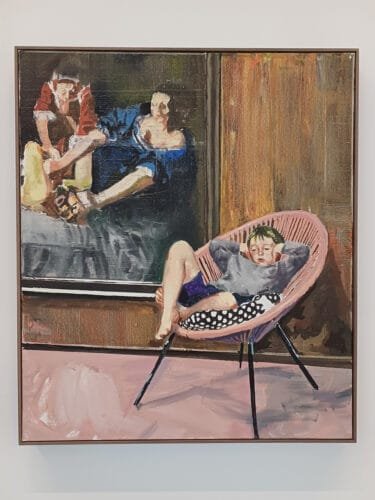
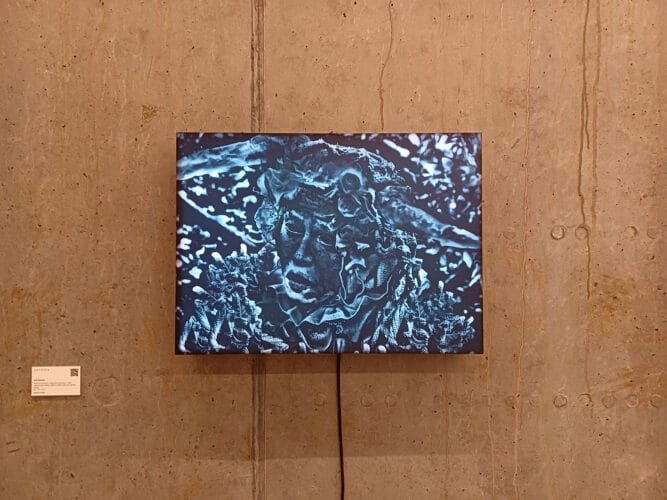
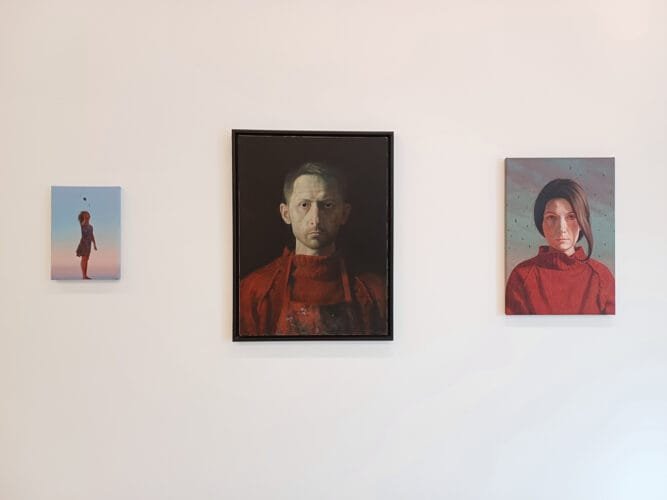
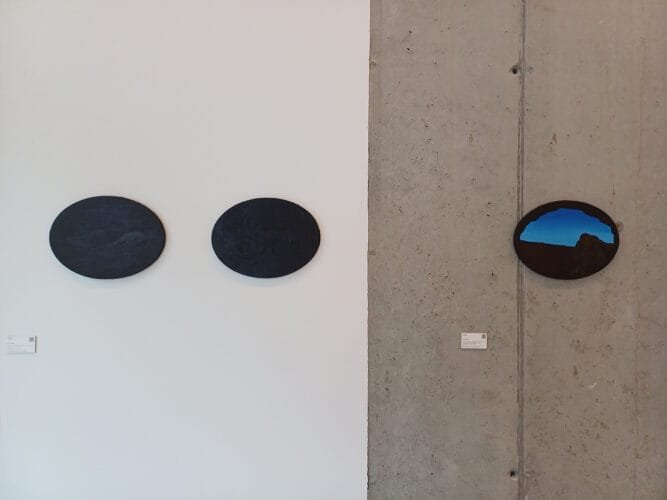
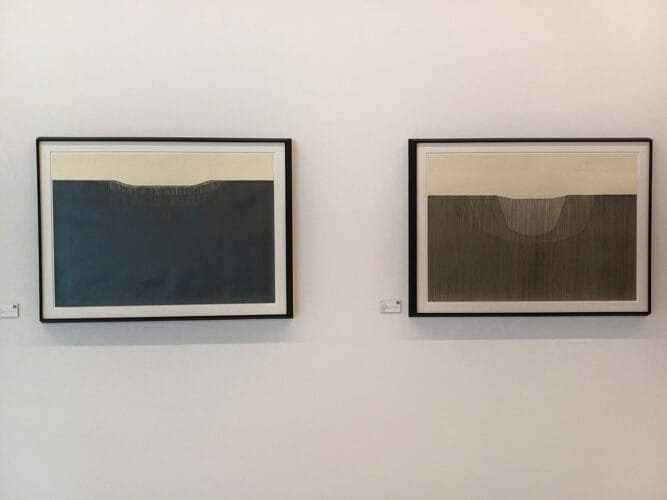
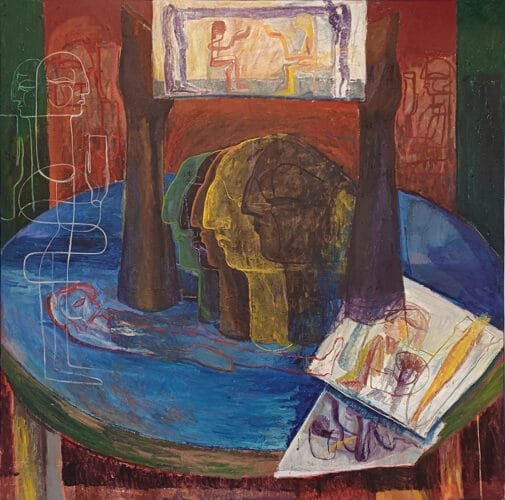
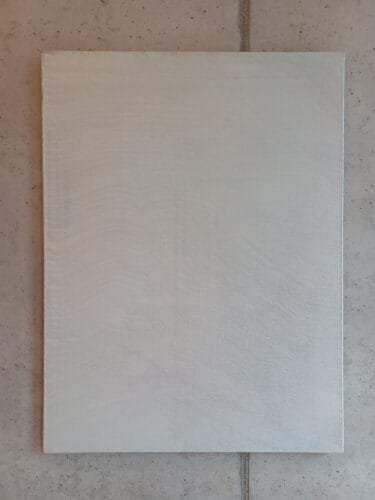
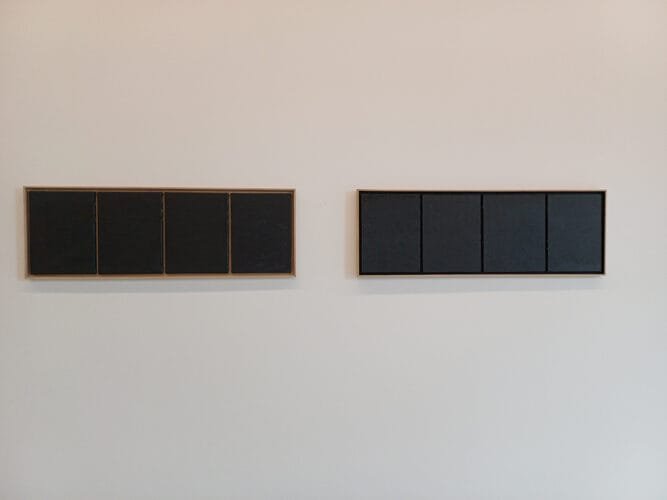
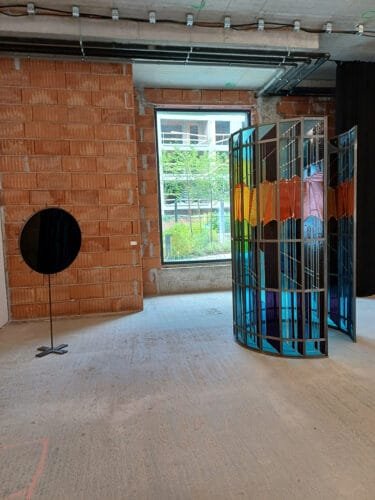
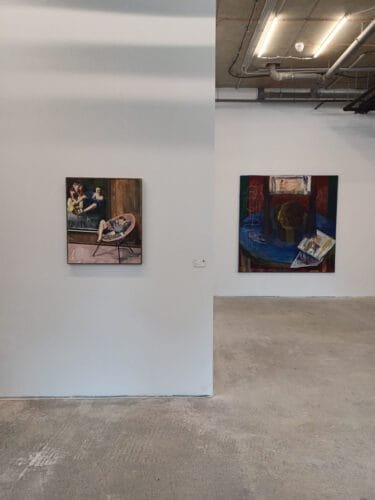
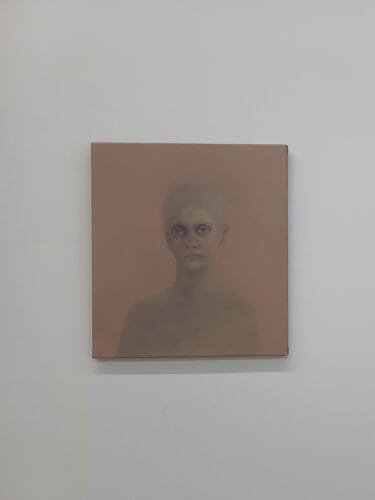
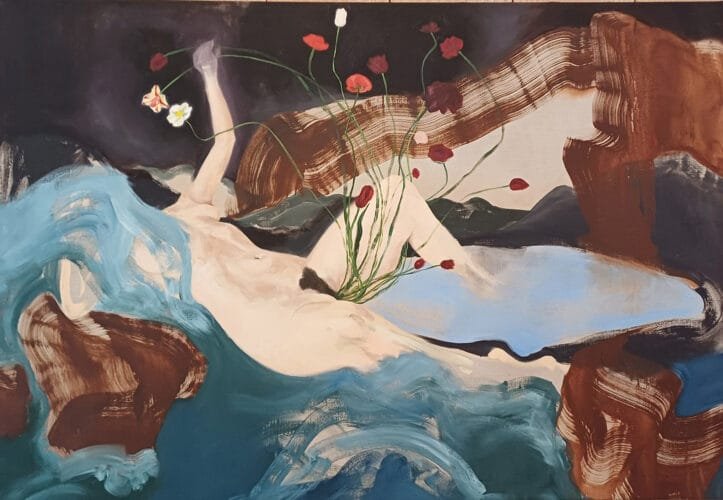
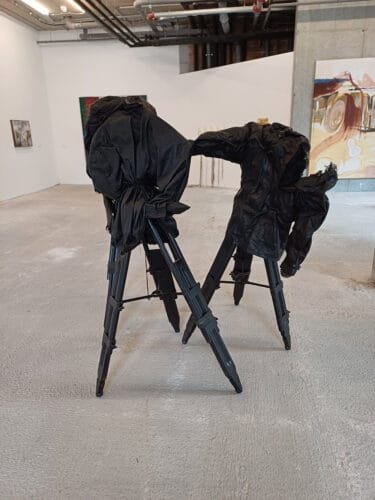
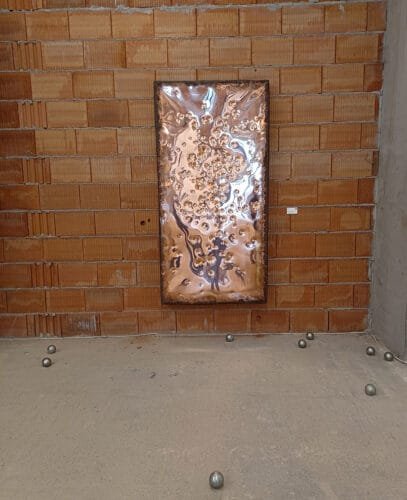
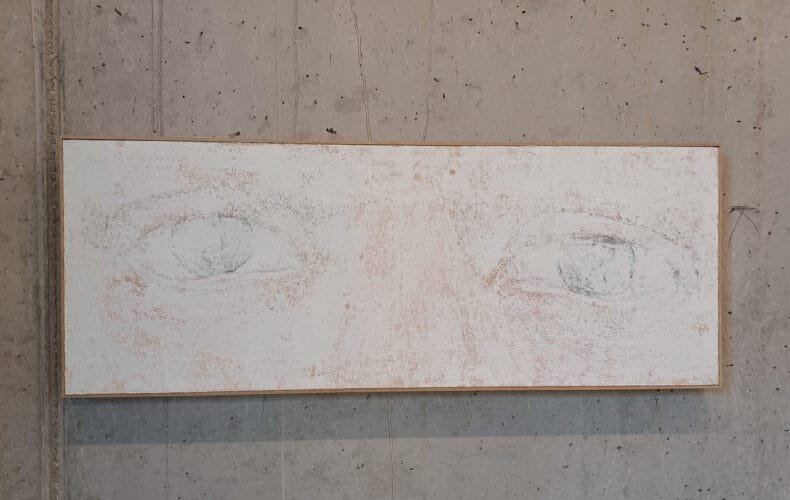
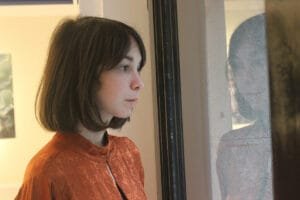
Comments are closed here.